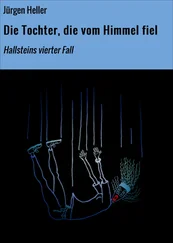Pa said, “It looks like a Disney cartoon.”
“It won’t look like Disney when she gets pissed and eats a frat boy.” Celine’s breathing was labored and her eyes were shiny. Pa wondered if the boys’ can holders had set her off. Celine couldn’t stand conspicuous expressions of dominance. The young men were already princes of the universe, if not masters: They were white, male, athletic, tall, attending one of the best universities; they had great teeth and good skin and they didn’t seem to be blind or hitch. They had it made. Why did they have to advertise a contempt for women? Pa knew that it would enrage her and he sometimes thought that she took her rage out on herself. The two boys didn’t even know they had skated: At lower altitude, where there was more oxygen, he was pretty sure she would have ended up in possession of the beer cozies, after speaking to them about respect and their own mothers.
There was no shade where they were standing and she shielded her eyes with one hand and placed the other on her chest and struggled to get a full breath. She blew out through pursed lips. She closed her eyes and when she opened them they were very wide as if she were looking for air.
“I think we’re pretty high up,” Pete said. “Do you want a shot of oxygen?”
“I guess.” She was frustrated. That she couldn’t just stand out here with a group of dumb tourists in the sun and watch a bear.
“I can get it.”
“That’s okay.” She gave Pete her hand and they walked slowly back across the narrowed road and he pulled the small oxygen condenser out of the backseat. He turned it on and it hummed and Celine’s hand shook as she tried to untangle the transparent tubing. Pa took the tubing from her gently and loosened the coils and handed her the cannula, which she worked into her nose. Her hands stopped shaking almost immediately and she placed the split tube over her ears and just stood against the truck and breathed. “Okay,” she said finally. “I’ll just use it a little longer while we drive.”
They turned east at a sign that said LAMAR VALLEY—SILVER GATE, and now they didn’t see another car. Celine breathed easier. She unhooked the cannula from her ears and handed it to Pa. “There. Good,” she said. They drove upstream along a creek that flowed over stones of many colors, rusts and greens and blues. Just before dusk they came over a rise and down into the Lamar Valley.
The sun was almost down, fighting through dark clouds and lighting the new snow on the highest ridges. In the filtered light she saw the river lined with red-stemmed willows threading through a broad valley of tall grass. The meadows flowed out of a distance where night had already settled, but islands of aspen, flame-colored, stuttered in a sundown wind. The slopes that held the valley were blanketed in dark spruce and fir.
And over all the open country, wherever forest gave way to grass, she made out the herds: moving or grazing, the elk in their hundreds, bunched and heads down; pronghorns in little groups; the dark shadow of dozens of bison moving slowly together and the black humps that were the huge single bulls, scattered over the valley like boulders, unafraid of anything that lived. Celine and Pete pulled over and shucked on goose-down sweaters and stood at the edge of the road in a cold wind and scanned with binocs. Pete spotted a pale coyote trotting down a game trail between rock ledges. Celine found two foxes on the riverbank, ruddy in the last light. They saw mergansers in a pool and a heron in the reedy horsetails across the river. On the wind they heard bird cries, very faint, and realized it was the closest elk, mothers calling to their calves.
“Jeez,” Celine murmured. “All these animals. It’s like a diorama at the natural history museum. When I was little I just wanted to walk into them.”
Pete would write that night in his journal that when they came over the rise and down into the reach of the Lamar they seemed to enter another time. It felt as if the rest of earth might suffer through its eons of fire and ice, and this valley would remain: Dusk would gather as it always had on an autumn evening, and the elk would bugle and cry, a harrier would beat her wings over the grasses. The wolves that thrived here now would watch them all from the blowdown at the edge of the forest.
Celine said, “I was looking at the map. This valley pretty much runs all the way to Cooke City. A tributary does. If Paul Lamont is dead, he might have died in this drainage. It’s strange to think it.”
“There are worse places to go, I guess,” Pete said. “I just don’t get the feeling he is here. Or ever was for very long.”
Celine reached for Pete’s hand. Her own was icy and his felt warm. He’d been keeping them in his pockets. “I don’t either,” she said. “If he had died here then why would our handsome young friend be so interested?”
“Speaking of whom, where is he? He seems to be slacking.”
“When we get back to the truck I can tell you.”

They decided to wait until Cooke City to track down Mr. Tanner. They wanted to drive the remaining twenty-five miles before full dark. They unfolded the map and drove up the Lamar. The road and the river skirted the base of Druid Peak, a dome of forest glades and rimrock where some of the first Canadian wolves were reintroduced in the nineties. A tributary branched off to their left and continued north-northeast and they followed it. Soda Butte Creek was smaller and the valley was narrower and the black woods ran down off the steep ridges almost to the banks of the stream. The mountains loomed over the river bottom and were walled with high broken cliffs. The rock was striped with seeping water and runneled with thin waterfalls. High up were flecks of white that Pete said must be mountain goats. Jesus—nothing up there but cliff. It may have been the thickening dark or the first patter of rain, but this upper valley felt ominous. Pete had his file of notes open and their GPS in his hand, and he said Lamont’s car was found just about eight miles north. They would hit the spot at about the same time of night that he had probably come through. Even the weather might be about the same.
Up ahead they saw two white vans parked on the shoulder and a group of people milling. Curious, they pulled over, got out. It was a safari, a group of wildlife watchers just packing up their spotting scopes. Maybe eight of them, in expensive outdoor gear.
A young woman guide in a black fleece jacket shoved one last tripod into the back of a van and turned and said, “That’s right. Rafaella asked about Tala, the legendary she-wolf. Come over here, all of you, and I’ll tell you.” The eight crowded around her. She wore a knit wool hat and her dirty-blond hair stuck out from under it in a ponytail. She had a round face and a chipped front tooth. “I told you about the Soda Butte pack. One of the first in the valley. Tala came from that bunch. By then there were three established and active packs centered around this area and they were thriving. But Tala had an independent streak from the get-go. She was big and fast, and she was very very smart. Wily, cunning, playful. She began to hunt by herself. The biologists were amazed. The pack would be lying around and she would just get up, stretch, and it was as if she were saying, ‘See ya later, I’m going to go get an elk.’ Incredible. She is one of the few wolves ever documented that could bring down a full-grown adult elk on her own. Again and again. It’s very dangerous work and she did it with ease.” The guide raised her voice over the cold wind.
“She broke away. Went off to start her own pack. An alpha female if there ever was one. Of course every alpha male in the country wanted to mate with her. She had her pick. And you know what she did?” The guide was very good. She had them in the palm of her wool mitten. She noticed Celine and Pete standing at the edge of her group and nodded. “She went and picked two gawky, gangly adolescent brothers. Who didn’t know crap, excuse my French. She could have had her pick! Did have. And she picked these two youngsters that didn’t have much skill and she mated with both of them and taught them how to hunt. One of the great stories. They got very good at hunting, too. And the pack got strong. That was the beginning of the famous Cache Creek pack.”
Читать дальше













